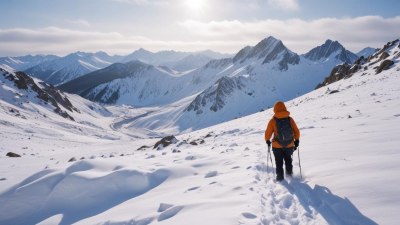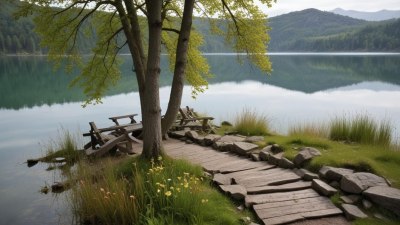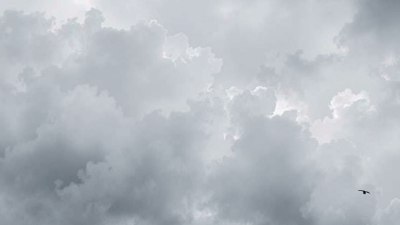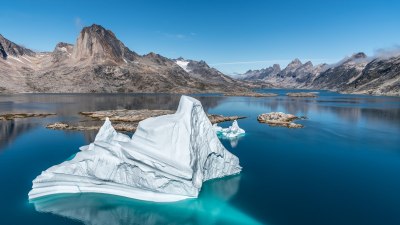How Cold Air Pools in Valleys Overnight
Explore how cold air accumulates in valleys overnight, influencing local climate, weather patterns, and temperature variations.

Image created with Flux Schnell
Understanding how cold air pools in valleys overnight provides insights into local microclimates, frost formation, and temperature variations that impact agriculture, ecosystems, and human activities. This phenomenon, often observed in mountainous and hilly terrains, results from complex interactions of atmospheric conditions, topography, and surface temperatures.
At the heart of cold air pooling is the basic physical principle that cold air is denser and heavier than warm air. During the day, the sun heats the earth's surface, warming the air close to it. However, after sunset, the ground loses heat rapidly through radiation, a process known as radiative cooling. The cooling surface chills the air in contact with it, increasing its density and causing it to sink.
In flat areas, cooled air tends to mix with the relatively warmer air above, but in valleys and depressions, the heavier, colder air flows downhill and accumulates in low-lying areas. This accumulation forms a pool of cold air that remains trapped due to the surrounding higher terrain acting as a barrier.
Mechanisms Behind Cold Air Pool Formation
Cold air pooling starts with radiative cooling of the earth's surface after sunset. The process is most efficient on clear, calm nights when heat loss via infrared radiation to the atmosphere and outer space is maximized. Under overcast or windy conditions, cooling is less effective because clouds trap outgoing radiation, and wind mixes the air, preventing stratification.
As the ground cools, the adjacent air mass also cools down through conduction and convection. The heavier, cooled air then sinks since its density exceeds that of the warmer air aloft. Gravity causes this cold air to flow along slopes towards valley bottoms, where it accumulates in a stable layer.
The surrounding topography plays a critical role by acting as a containment basin. The valley walls prevent the lateral dispersion of heavy cold air, effectively trapping it overnight. This leads to a temperature inversion, where temperature increases with height, contrary to the usual atmospheric lapse rate.
The Role of Temperature Inversions in Valleys
Temperature inversions in valleys are closely linked to cold air pooling. Normally, air temperature decreases with altitude because sunlight heats the ground, which in turn warms the air near its surface. However, during nighttime in valleys, the process reverses. The valley floors cool rapidly via radiative cooling, chilling the air immediately above.
This cooler air remains trapped beneath warmer air layers, creating a stable inversion layer. Such inversions inhibit vertical mixing and can persist until sunlight warms the valley floor sufficiently to reverse the process.
These inversions can be quite pronounced within deep valleys or basins. The depth and duration of the inversion depend on several factors including valley shape, size, surrounding elevations, and local climate conditions.
Atmospheric Conditions Favoring Cold Air Pools
Several key atmospheric conditions enhance the formation of cold air pools in valleys:
- Clear Skies: Allow maximum radiative heat loss from the surface at night.
- Light or No Wind: Prevents mixing and disturbance of the accumulating cold air.
- Dry Air: Facilitates effective radiative cooling since water vapor can trap heat.
- Long Nights: Provide extended cooling periods, especially in winter months.
In contrast, cloud cover or strong winds can disrupt or prevent cold air pooling by reducing surface cooling or enhancing air mixing. Similarly, high humidity may reduce heat loss from the surface, moderating temperature differences.
Topographic Influences on Cold Air Pools
Valley geometry significantly impacts the formation and dynamics of cold air pools. Narrow, enclosed valleys with steep sidewalls are more adept at trapping cold air due to limited horizontal mixing and poor ventilation. Gentle slopes and broad valley floors may allow some dilution of cold air, reducing the pool’s intensity.
Additionally, the valley’s orientation relative to prevailing winds and solar radiation affects cold air pool characteristics. Valleys shielded from sunlight experience longer-lasting pools since solar warming is reduced.
The elevation difference between the valley floor and surrounding ridges influences the depth and strength of the cold air pool. Greater elevation differences promote stronger pooling by increasing the potential for cold air to settle densely in the lowest areas.
Diurnal Cycle Impact on Cold Air Pool Evolution
Cold air pooling is tightly coupled to the diurnal cycle. After sunset, surface cooling leads to pooling as previously described. During the night, the pool stabilizes and deepens.
Once the sun rises, sunlight gradually warms the valley floor and adjacent slopes. As the surface warms, the cold air near the ground becomes buoyant, initiating convective mixing. This mixing erodes the stable inversion layer, disperses the cold pool, and restores the normal temperature profile.
The rate of this erosion depends on solar intensity, cloudiness, and wind conditions. On clear, calm days, the cold pool dissipates quickly, while on overcast or windless mornings, cold air can linger for hours.
Impact of Cold Air Pools on Weather and Climate
Cold air pooling affects local weather by inducing sharp temperature gradients between valley floors and surrounding ridges. This leads to microclimatic differences that influence vegetation, frost risk, and human comfort.
Valley cold pools often cause nocturnal frost, particularly hazardous to crops. Growers in valley regions use frost mitigation strategies such as wind machines or even ice nucleation sprays to disrupt pooling conditions.
From a broader climate perspective, cold air pooling contributes to temperature inversions that can trap pollution and exacerbate poor air quality. This is particularly problematic in urban valleys, where emissions accumulate near the surface during these events.
Also, cold pools can influence fog formation, as cooler temperatures near the surface condense moisture, creating persistent fog or low clouds that can last into the morning.
Examples and Case Studies of Cold Air Pools
One well-documented example is the Great Salt Lake Valley in Utah, USA, where cold air pooling leads to severe winter temperature inversions that trap pollution and cause health concerns.
In the Appalachian Mountains, small valleys regularly experience overnight frost caused by pooling cold air, impacting local agriculture.
Alpine valleys in Europe provide classic cases for studying cold air pooling, given their enclosed geometry and significant diurnal temperature variations. Studies in the Swiss Alps illustrate how topography and weather conditions determine cold pool lifespan and strength.
Techniques to Measure and Model Cold Air Pools
Meteorologists and researchers use various tools to study cold air pooling, including:
- Temperature Sensors: Networks of thermometers placed along valley slopes and floors to capture temperature gradients.
- Anemometers: To measure wind speed and confirm calm conditions conducive to pooling.
- Remote Sensing: Satellite imagery and LiDAR for surface temperature mapping and terrain analysis.
- Numerical Weather Models: High-resolution simulations integrating topography and atmospheric conditions to predict pooling events.
These tools allow detailed observation and forecasting of cold air pools, improving warnings for frost or pollution hazards.
Strategies for Managing and Mitigating Cold Air Pool Effects
In agricultural settings, frost protection measures such as frost fans and heaters help break stratification and warm crops. Site selection also considers valley microclimates to minimize exposure to cold air pooling. Orchard managers might choose higher elevation or better-drained sites to avoid pools of cold air.
Urban planners in valley cities confront pollution accumulation due to cold air pools by controlling emissions, encouraging clean transportation, and optimizing land use to improve ventilation.
Understanding when and where cold air pooling occurs also informs emergency response and public health advisories, particularly during severe pollution episodes.
Cold Air Pooling in a Changing Climate
Climate change impacts cold air pooling patterns by altering temperature regimes, humidity levels, and cloud cover. Warmer nights could reduce the intensity or frequency of pooling events, but increased atmospheric moisture or changes in wind patterns might counteract these effects.
Research suggests that in some mountainous regions, shifts in snow cover and vegetation feedbacks may modify surface cooling dynamics, influencing cold air pool characteristics.
Continuous monitoring is essential to understand these evolving processes and prepare adaptive strategies for agriculture and urban management.
Cold air pools form in valleys overnight due to radiative cooling and topographic trapping of denser, cooler air. The resulting temperature inversions create distinct microclimates with implications for frost risk, air quality, and fog formation. Atmospheric conditions like clear skies and calm winds enhance pooling, while topography shapes its depth and duration. Scientific measurement and modeling improve prediction and mitigation, especially important given the sensitivity of these phenomena to climate variability.
Overall, recognizing the dynamics of cold air pooling is vital for optimizing land use, protecting crops, and managing environmental health in valley regions worldwide.











